-
 Bitcoin
Bitcoin $106,754.6083
1.33% -
 Ethereum
Ethereum $2,625.8249
3.80% -
 Tether USDt
Tether USDt $1.0001
-0.03% -
 XRP
XRP $2.1891
1.67% -
 BNB
BNB $654.5220
0.66% -
 Solana
Solana $156.9428
7.28% -
 USDC
USDC $0.9998
0.00% -
 Dogecoin
Dogecoin $0.1780
1.14% -
 TRON
TRON $0.2706
-0.16% -
 Cardano
Cardano $0.6470
2.77% -
 Hyperliquid
Hyperliquid $44.6467
10.24% -
 Sui
Sui $3.1128
3.86% -
 Bitcoin Cash
Bitcoin Cash $455.7646
3.00% -
 Chainlink
Chainlink $13.6858
4.08% -
 UNUS SED LEO
UNUS SED LEO $9.2682
0.21% -
 Avalanche
Avalanche $19.7433
3.79% -
 Stellar
Stellar $0.2616
1.64% -
 Toncoin
Toncoin $3.0222
2.19% -
 Shiba Inu
Shiba Inu $0.0...01220
1.49% -
 Hedera
Hedera $0.1580
2.75% -
 Litecoin
Litecoin $87.4964
2.29% -
 Polkadot
Polkadot $3.8958
3.05% -
 Ethena USDe
Ethena USDe $1.0000
-0.04% -
 Monero
Monero $317.2263
0.26% -
 Bitget Token
Bitget Token $4.5985
1.68% -
 Dai
Dai $0.9999
0.00% -
 Pepe
Pepe $0.0...01140
2.44% -
 Uniswap
Uniswap $7.6065
5.29% -
 Pi
Pi $0.6042
-2.00% -
 Aave
Aave $289.6343
6.02%
When will the VR indicator rebound after being blunted at a low level?
The VR indicator helps crypto traders assess market sentiment by measuring up-volume vs. down-volume, with readings below 0.7 signaling oversold conditions and potential rebounds.
Jun 16, 2025 at 04:08 pm
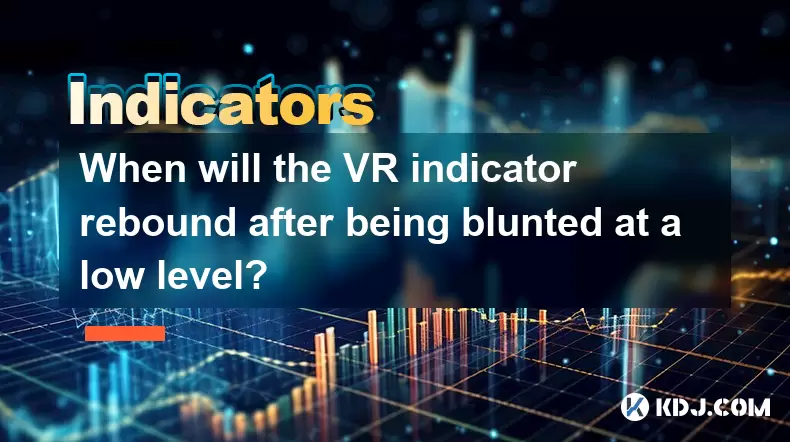
Understanding the VR Indicator in Cryptocurrency Trading
The VR (Volume Ratio) indicator is a crucial analytical tool used by cryptocurrency traders to gauge market sentiment based on volume. It calculates the ratio of up-volume to down-volume over a specified period, typically 14 or 26 days. When the VR value falls below a certain threshold—often interpreted as being blunted at a low level—it signals extreme bearish sentiment and potentially oversold conditions.
In the context of crypto trading, understanding how and when the VR indicator rebounds from such levels is essential for timing entries or exits. However, it's important to note that no single indicator provides foolproof predictions. The VR rebound must be analyzed alongside other technical and fundamental factors.
Tip: A VR reading below 0.7 is often considered extremely low, indicating strong selling pressure and potential exhaustion of downside momentum.
What Causes the VR Indicator to Become Blunted?
A blunted VR occurs when the volume supporting downtrends significantly outweighs the volume during uptrends for an extended period. This usually happens during prolonged bear markets or after sharp price corrections in specific cryptocurrencies. In such cases, panic selling, negative news cycles, and reduced investor confidence contribute to the imbalance.
- Market-wide selloffs triggered by regulatory changes or macroeconomic instability can cause VR values to drop sharply.
- Prolonged accumulation phases may also result in flat volume trends, making the VR appear stagnant or "blunted."
- High-frequency trading algorithms manipulating short-term volume data can distort VR readings temporarily.
Traders need to differentiate between temporary distortion and genuine shifts in market psychology before expecting a rebound.
Historical Behavior of VR During Crypto Market Cycles
Analyzing historical charts of major cryptocurrencies like Bitcoin and Ethereum reveals patterns in VR behavior across different market cycles. During the 2018 bear market, for example, Bitcoin’s VR dropped below 0.5 several times before gradually rising as institutional interest began to stabilize the market.
Similarly, during the 2022 crypto crash, many altcoins saw their VR indicators reach multi-year lows. These levels were followed by small rallies but failed to sustain due to ongoing macroeconomic pressures and lack of liquidity support.
- Bitcoin’s VR rebound in early 2023 occurred only after the Fed signaled a pause in rate hikes and stablecoin regulations gained clarity.
- Ethereum’s post-merge rally showed a notable VR recovery due to network upgrades and improved on-chain activity metrics.
- Altcoins with strong fundamentals, such as Cardano and Solana, experienced faster VR rebounds compared to speculative tokens.
This suggests that the nature of the asset, prevailing macro conditions, and project-specific developments influence the speed and strength of the VR rebound.
Technical Conditions That Precede a VR Rebound
Before the VR indicator rebounds from a low level, certain technical setups often precede the shift:
- Divergence between price and volume—when prices continue to fall but volume starts to decline or consolidate, it hints at weakening sell pressure.
- Breakout above key moving averages—a sustained move above the 50-day or 200-day moving average can trigger renewed buying interest.
- Accumulation phase detected via on-chain metrics—such as increasing whale holdings or decreasing exchange inflows, which suggest smart money positioning.
These signs help confirm whether a VR rebound is imminent or just a temporary bounce within a broader downtrend.
How to Monitor and Interpret VR Signals Effectively
Monitoring VR effectively requires combining it with complementary tools and strategies:
- Use multiple timeframes—check both daily and weekly VR readings to avoid false signals caused by short-term volatility.
- Overlay with RSI or MACD—these indicators can help confirm if oversold conditions align with VR readings.
- Analyze volume profiles—look for sudden spikes or sustained increases in volume that might indicate the start of a new trend.
- Track on-chain analytics platforms—services like Glassnode or Santiment offer insights into real-time volume behavior and holder dynamics.
By cross-referencing these tools, traders can better assess whether the VR is likely to rebound or remain suppressed due to structural weakness in the asset or broader market.
Frequently Asked Questions
Q: Can the VR indicator be applied to all types of cryptocurrencies?
Yes, the VR indicator can be applied to any tradable cryptocurrency asset as long as sufficient volume data is available. However, its reliability varies depending on the liquidity and market capitalization of the token.
Q: How does the VR indicator compare to OBV (On-Balance Volume)?
While both indicators measure volume-based trends, VR focuses on the ratio of up-volume to down-volume, whereas OBV adds or subtracts volume based on price direction. VR offers a more normalized view, especially useful in volatile crypto markets.
Q: Is it possible for VR to stay low indefinitely?
Yes, particularly for assets that are losing relevance or facing continuous negative developments. If a cryptocurrency fails to attract consistent buying volume, its VR may remain permanently depressed.
Q: Does the VR indicator work well in sideways markets?
In range-bound or consolidation phases, the VR tends to flatten out, offering limited actionable signals. Traders should use additional filters like Bollinger Bands or Ichimoku Clouds to interpret sideways VR behavior accurately.
Disclaimer:info@kdj.com
The information provided is not trading advice. kdj.com does not assume any responsibility for any investments made based on the information provided in this article. Cryptocurrencies are highly volatile and it is highly recommended that you invest with caution after thorough research!
If you believe that the content used on this website infringes your copyright, please contact us immediately (info@kdj.com) and we will delete it promptly.
- 2025-W Uncirculated American Gold Eagle and Dr. Vera Rubin Quarter Mark New Products
- 2025-06-13 06:25:13
- Ruvi AI (RVU) Leverages Blockchain and Artificial Intelligence to Disrupt Marketing, Entertainment, and Finance
- 2025-06-13 07:05:12
- H100 Group AB Raises 101 Million SEK (Approximately $10.6 Million) to Bolster Bitcoin Reserves
- 2025-06-13 06:25:13
- Galaxy Digital CEO Mike Novogratz Says Bitcoin Will Replace Gold and Go to $1,000,000
- 2025-06-13 06:45:13
- Trust Wallet Token (TWT) Price Drops 5.7% as RWA Integration Plans Ignite Excitement
- 2025-06-13 06:45:13
- Ethereum (ETH) Is in the Second Phase of a Three-Stage Market Cycle
- 2025-06-13 07:25:13
Related knowledge
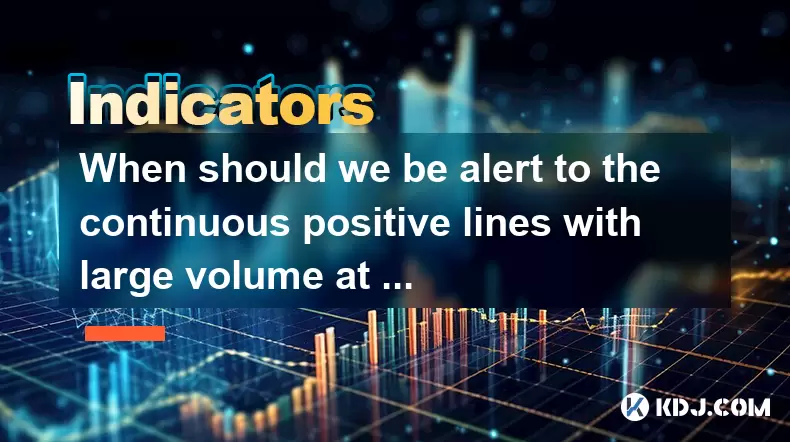
When should we be alert to the continuous positive lines with large volume at low levels?
Jun 16,2025 at 10:56pm
Understanding Continuous Positive Lines in Cryptocurrency ChartsIn the world of cryptocurrency trading, chart patterns are essential tools for predicting price movements. One such pattern that traders often observe is a series of continuous positive lines—also known as bullish candles—appearing at low price levels. These lines, especially when accompani...
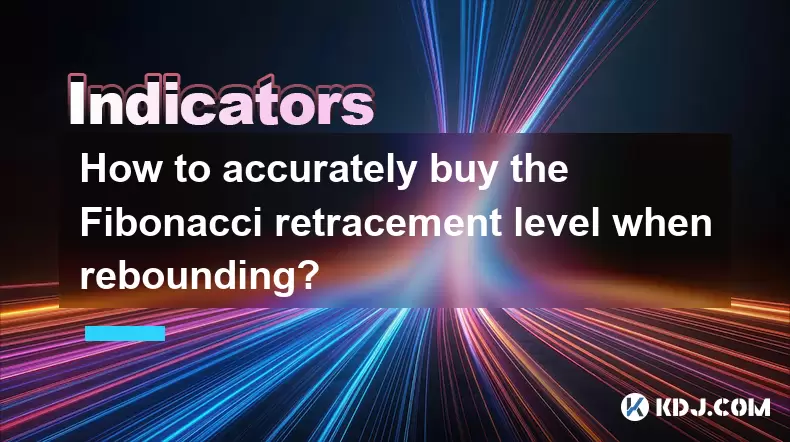
How to accurately buy the Fibonacci retracement level when rebounding?
Jun 16,2025 at 09:56pm
Understanding the Fibonacci Retracement ToolThe Fibonacci retracement is a popular technical analysis tool used by traders to identify potential support and resistance levels. It is based on the idea that markets will retrace a predictable portion of a move before continuing in the original direction. The key Fibonacci levels are typically 23.6%, 38.2%,...

How to set the stop profit point after the high-level propeller pattern?
Jun 16,2025 at 08:04pm
Understanding the High-Level Propeller PatternThe high-level propeller pattern is a technical analysis formation often observed in cryptocurrency trading charts. It typically appears at significant price peaks and signals potential reversals. The pattern consists of a large candlestick with long upper and lower shadows, resembling a propeller, indicatin...

When is the most reasonable stop loss after the three crows pattern?
Jun 16,2025 at 08:14pm
Understanding the Three Crows Pattern in Cryptocurrency TradingThe three crows pattern is a well-known bearish reversal signal in technical analysis, particularly relevant in volatile markets like cryptocurrency. It typically appears at the end of an uptrend and consists of three consecutive long red (or bearish) candles with progressively lower closes....
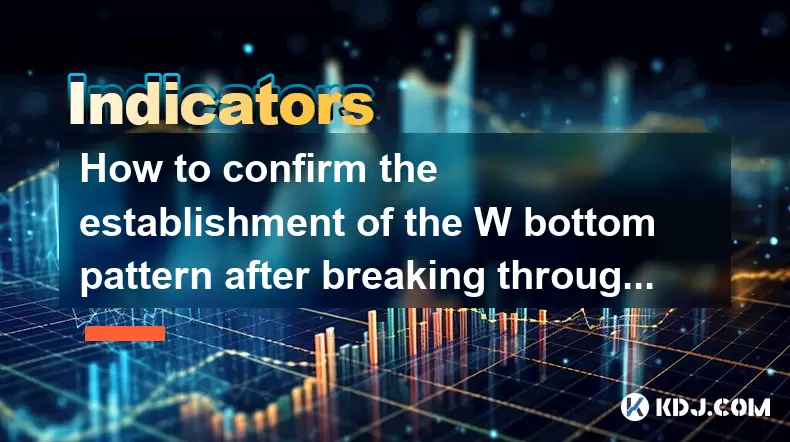
How to confirm the establishment of the W bottom pattern after breaking through the neckline?
Jun 16,2025 at 10:28pm
Understanding the W Bottom Pattern in Cryptocurrency TradingThe W bottom pattern is a popular technical analysis formation used by traders to identify potential reversal points in price trends. It typically appears at the end of a downtrend and signals a possible shift towards an uptrend. The pattern gets its name from its shape, which resembles the let...
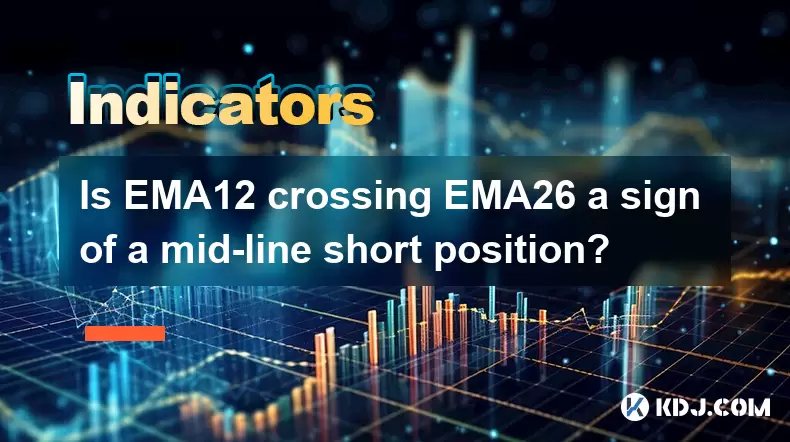
Is EMA12 crossing EMA26 a sign of a mid-line short position?
Jun 16,2025 at 07:22pm
Understanding EMA12 and EMA26 in Cryptocurrency TradingIn the world of cryptocurrency trading, Exponential Moving Averages (EMAs) are widely used tools for analyzing price trends. Specifically, the EMA12 and EMA26 are two of the most commonly referenced EMAs among traders. The EMA12 represents a short-term moving average calculated over the past 12 time...

When should we be alert to the continuous positive lines with large volume at low levels?
Jun 16,2025 at 10:56pm
Understanding Continuous Positive Lines in Cryptocurrency ChartsIn the world of cryptocurrency trading, chart patterns are essential tools for predicting price movements. One such pattern that traders often observe is a series of continuous positive lines—also known as bullish candles—appearing at low price levels. These lines, especially when accompani...

How to accurately buy the Fibonacci retracement level when rebounding?
Jun 16,2025 at 09:56pm
Understanding the Fibonacci Retracement ToolThe Fibonacci retracement is a popular technical analysis tool used by traders to identify potential support and resistance levels. It is based on the idea that markets will retrace a predictable portion of a move before continuing in the original direction. The key Fibonacci levels are typically 23.6%, 38.2%,...

How to set the stop profit point after the high-level propeller pattern?
Jun 16,2025 at 08:04pm
Understanding the High-Level Propeller PatternThe high-level propeller pattern is a technical analysis formation often observed in cryptocurrency trading charts. It typically appears at significant price peaks and signals potential reversals. The pattern consists of a large candlestick with long upper and lower shadows, resembling a propeller, indicatin...

When is the most reasonable stop loss after the three crows pattern?
Jun 16,2025 at 08:14pm
Understanding the Three Crows Pattern in Cryptocurrency TradingThe three crows pattern is a well-known bearish reversal signal in technical analysis, particularly relevant in volatile markets like cryptocurrency. It typically appears at the end of an uptrend and consists of three consecutive long red (or bearish) candles with progressively lower closes....

How to confirm the establishment of the W bottom pattern after breaking through the neckline?
Jun 16,2025 at 10:28pm
Understanding the W Bottom Pattern in Cryptocurrency TradingThe W bottom pattern is a popular technical analysis formation used by traders to identify potential reversal points in price trends. It typically appears at the end of a downtrend and signals a possible shift towards an uptrend. The pattern gets its name from its shape, which resembles the let...

Is EMA12 crossing EMA26 a sign of a mid-line short position?
Jun 16,2025 at 07:22pm
Understanding EMA12 and EMA26 in Cryptocurrency TradingIn the world of cryptocurrency trading, Exponential Moving Averages (EMAs) are widely used tools for analyzing price trends. Specifically, the EMA12 and EMA26 are two of the most commonly referenced EMAs among traders. The EMA12 represents a short-term moving average calculated over the past 12 time...
See all articles

























































































